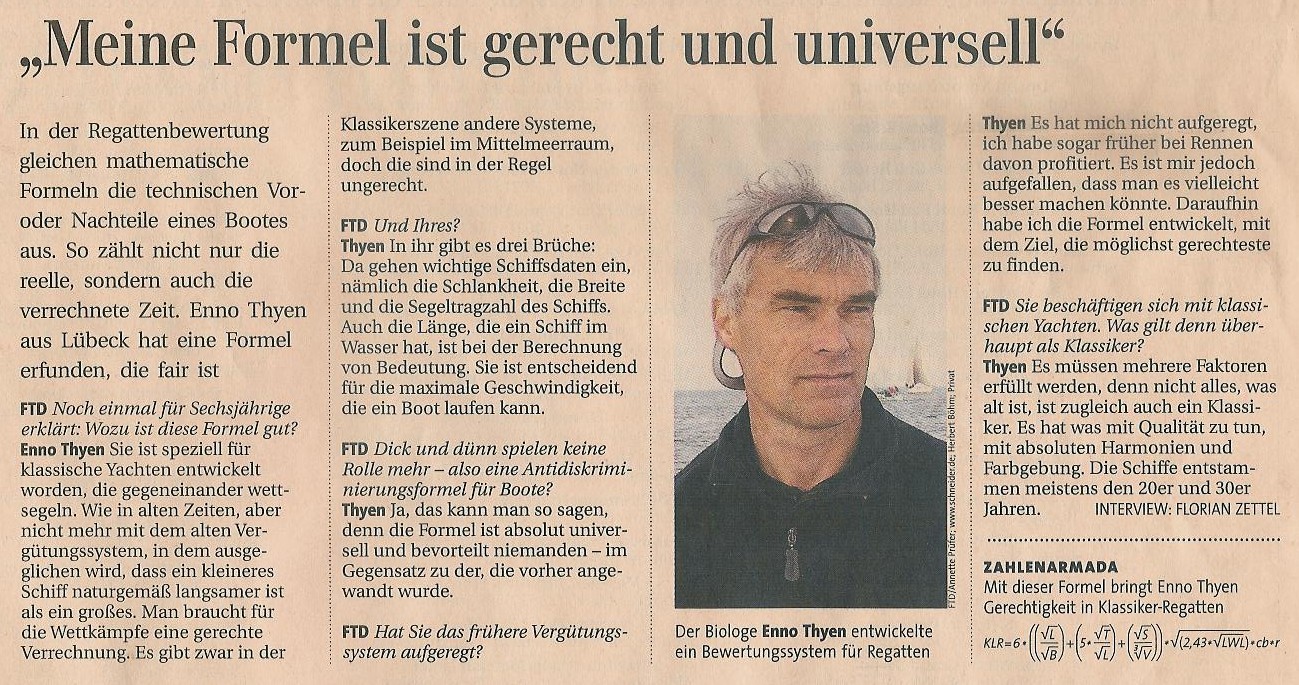It can be assumed that the majority of owners of classic yachts enjoy participation in regattas with their boats. In any case - their huge engagement, high participation numbers and many statements support this assumption! However, it can be stated that the fun of racing is closely linked to the conditions on race courses, the competitive situation and, not least, to the rating system in use.

Meanwhile there exist several handicap systems specifically developed for classic yacht racing, supplementing the systems common in competition sailing: IMS (comparatively expensive and elaborate), ORC-Club, Dansk Handicap as calculated formulas as well as Yardstick and Lys as purely empirical systems. The necessity for such specialised systems originates from the difficulty of rating old yachts and boats fairly inside the general handicap systems. Mentionable are the C.I.M. rule applied in the mediterranean waters and also applied after lengthy thought in Cowes, the "New Length Rule" NNL in Denmark, applied in Svendborg, and of course the KLR handicap of the German Classic Yacht Club FKY.
The C.I.M. Rule includes criteria like originality, condition, equipment etc. into the formula besides boat data. The formula is comparatively complicated. It considers numerous coefficients besides basic data, surprisingly omitting displacement. The English translation of the French original explaning the formula covers 15 pages! An official C.I.M. measurement certificate requires a measuring by authorised measurement experts (cost unknown). The resulting ratings do not satisfy the owners in all cases … carefully expressed. In consequence, C.I.M. ratings result in an intransparent mix of sailing performance of a yacht and it's "classic grade". One example: a yacht that used a triradial spinnaker in lieu of it's original radial spinnaker was punished with a 3% time markup!
The handicap system KLR ("Klassiker-Rennwert" = "Classic Yacht Rating") applied by the German Classic Yacht Club (FKY), also used by KTK in Norway) followed the wish to develop a system that does not form types and is easy to handle. The latter means: no measurement, a small number of decisive data, no cost and small effort for the owners. The rating of a yacht or boat should only evaluate the actual sailing performance (respectively it's potential) and include a factor for rigging type (wood or aluminium) as well as lateral shape. To reward originality, condition etc. other possibilities exist in the form of the restauration awards or publications. A basis for fairness should be provided by combining a formula that delivers a justified rating for new or unknown yachts and boats using a small number of inputs, supplemented by the possibility of empirical adjustments based on substantiated experience.

Since 2002, a KLR committee presides over the current KLR rating values and publishes a yearly update of the KLR rating list. In this conext, it is certainly interesting that in it's more than 20 years of use, there was no need to adjust the KLR formula - in spite of the large number of results (many thousands of starters) evaluated on various race events and courses. Slight adjustments of calculated ratings bei 1 to 3 points where executed for less than 10% of yachts and boats.
The people in FKY responsible for racing are still convinced that KLR is the "right" system - at least the most practical we have at this time.
Enno Thyen
